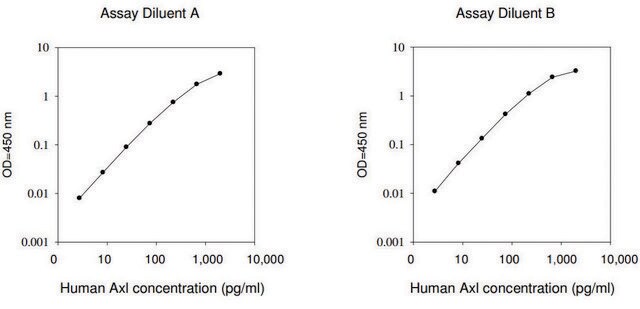MABT326
Anti-CEACAM3/5 Antibody, clone 308/3-3
clone 308/3-3, from mouse
别名:
Carcinoembryonic antigen-related cell adhesion molecule 3, Carcinoembryonic antigen CGM1, CD66d, Carcinoembryonic antigen-related cell adhesion molecule 5, Carcinoembryonic antigen, CEA, Meconium antigen 100, CD66e
登录查看公司和协议定价
所有图片(3)
About This Item
分類程式碼代碼:
12352203
eCl@ss:
32160702
NACRES:
NA.43
推荐产品
生物源
mouse
品質等級
抗體表格
purified antibody
抗體產品種類
primary antibodies
無性繁殖
308/3-3, monoclonal
物種活性
human
應無反應活性
rat, mouse
技術
ELISA: suitable
flow cytometry: suitable
immunoprecipitation (IP): suitable
western blot: suitable
同型
IgG1κ
NCBI登錄號
UniProt登錄號
目標翻譯後修改
unmodified
基因資訊
human ... CEACAM5(1048)
相关类别
一般說明
Carcinoembryonic antigen-related cell adhesion molecule 3 (UniProt P40198; also known as Carcinoembryonic antigen CGM1, CD66d) is encoded by the CEACAM3 (also known as CD66D, CGM1) gene (Gene ID 1084) in human. The carcinoembryonic antigen- (CEA-) related cell adhesion molecules (CEACAMs) constitute a 12-member subgroup of the CEA family of immunoglobulin-related proteins first described in 1965 (PMID 4953873). CEACAMs are reported to participate in diverse physiological processes, including cell adhesion, differentiation, proliferation, and survival, as well as in carcinogenesis and bacterial pathogenesis. CEACAM molecules from neighbouring cells can interact via their respective extracellular N-terminal IgV-like domain and mediate cell-to-cell adhesion through trans-oligomerization. CEACAM molecules within the same cell can also undergo transmembrane domain-mediated cis-oligomerization, an event important for sustaining downstream cellular signaling. Athough CEACAM1 is shown to utilize its cytoplasmic domain for transducing cellular signaling, not all CEACAM members are expressed with a significant cytoplasmic domain, and others (CEACAM5/6/7/8) are GPI-anchored without even a transmembrane domain. Human CEACAM3 and CEACAM4 are two CEACAMs whose extracellular region is composed of only one V-type Ig-like extracellular domain (a.a. 35-142 of CEACAM3). Human CEACAM5 (UniProt P06731), on the other hand, is a GPI-anchored CEACAM with the most extracellular Ig domains, 7 in all.
特異性
Clone 308/3-3 reacts with human CEACAM3 and CEACAM5, but not human CEACAM1/4/6/7/8, rat CEACAM1, or mouse CEACAM1 & CEACAM2.
免疫原
Epitope: Extracellular domain.
Human IgG1 Fc-tagged recombinant human CEACAM3 extracellular domain.
應用
Anti-CEACAM Antibody, clone 308/3-3 is an antibody against CEACAM3/5 for use in Western Blotting, ELISA, Flow Cytometry, Immunoprecipitation.
ELISA Analysis: 10 μg/mL from a representative lot detected CHO cell-expressed full-length glycosylated human CEACAM3 and CEACAM5, but not CEACAM1 (CEACAM1-4L), CEACAM4, CEACAM6, CEACAM7, or CEACAM8 (Courtesy of Dr. Bernhard B. Singer, University of Duisburg-Essen, Germany).
Flow Cytometry Analysis: 10 μg/mL from a representative lot immunostained CHO cell transfectants expressing human CEACAM3 and CEACAM5, but not CHO cells expressing human CEACAM1 (CEACAM1-4L), CEACAM4, CEACAM6, CEACAM7, or CEACAM8 (Courtesy of Dr. Bernhard B. Singer, University of Duisburg-Essen, Germany).
Immunoprecipitation Analysis: 5 μg from a representative lot immunoprecipitated exogenously expressed full-length glycosylated human CEACAM5 from 500 μg of lysate (in 600 μL) from transfected HeLa cells (Courtesy of Dr. Bernhard B. Singer, University of Duisburg-Essen, Germany).
Western Blotting Analysis: 10 μg/mL from a representative lot detected exogenously expressed full-length glycosylated human CEACAM5 in 50 μg of lysate from transfected HeLa cells (Courtesy of Dr. Bernhard B. Singer, University of Duisburg-Essen, Germany).
Flow Cytometry Analysis: 10 μg/mL from a representative lot immunostained CHO cell transfectants expressing human CEACAM3 and CEACAM5, but not CHO cells expressing human CEACAM1 (CEACAM1-4L), CEACAM4, CEACAM6, CEACAM7, or CEACAM8 (Courtesy of Dr. Bernhard B. Singer, University of Duisburg-Essen, Germany).
Immunoprecipitation Analysis: 5 μg from a representative lot immunoprecipitated exogenously expressed full-length glycosylated human CEACAM5 from 500 μg of lysate (in 600 μL) from transfected HeLa cells (Courtesy of Dr. Bernhard B. Singer, University of Duisburg-Essen, Germany).
Western Blotting Analysis: 10 μg/mL from a representative lot detected exogenously expressed full-length glycosylated human CEACAM5 in 50 μg of lysate from transfected HeLa cells (Courtesy of Dr. Bernhard B. Singer, University of Duisburg-Essen, Germany).
Research Category
Cell Structure
Cell Structure
Research Sub Category
Adhesion (CAMs)
Adhesion (CAMs)
品質
Evaluated by Western Blotting Analysis in lysates of CEACAM3 & CEACAM5 transfected CHO cells.
Western Blotting Analysis: 2.0 μg/mL of this antibody detected exogenously expressed full-length glycosylated human CEACAM3 and CEACAM5 in 10 μg of lysates from transfected CHO cells.
Western Blotting Analysis: 2.0 μg/mL of this antibody detected exogenously expressed full-length glycosylated human CEACAM3 and CEACAM5 in 10 μg of lysates from transfected CHO cells.
標靶描述
~30/180 kDa (CEACAM3/CEACAM5) observed. 27.09/19.40/22.75 kDa (human CEACAM3 isoform CGM1A/CGM1B/CGM1C) and 76.80/76.72 kDa (human CEACAM5 isoform 1/2) calculated. Target bands appear smeary and larger than the calculated molecular weights due to glycosylation. Uncharacterized band(s) may appear in some lysates.
外觀
Protein G Purified
Format: Purified
Purified mouse monoclonal IgG1κ in buffer containing 0.1 M Tris-Glycine (pH 7.4), 150 mM NaCl with 0.05% sodium azide.
儲存和穩定性
Stable for 1 year at 2-8°C from date of receipt.
其他說明
Concentration: Please refer to lot specific datasheet.
免責聲明
Unless otherwise stated in our catalog or other company documentation accompanying the product(s), our products are intended for research use only and are not to be used for any other purpose, which includes but is not limited to, unauthorized commercial uses, in vitro diagnostic uses, ex vivo or in vivo therapeutic uses or any type of consumption or application to humans or animals.
未找到合适的产品?
试试我们的产品选型工具.
儲存類別代碼
12 - Non Combustible Liquids
水污染物質分類(WGK)
WGK 1
閃點(°F)
Not applicable
閃點(°C)
Not applicable
我们的科学家团队拥有各种研究领域经验,包括生命科学、材料科学、化学合成、色谱、分析及许多其他领域.
联系技术服务部门